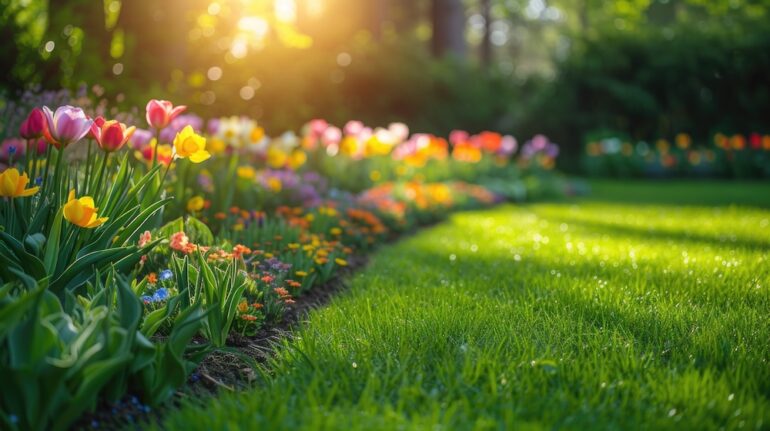Brilliant green grass is essential to a beautiful yard. Do you know what to do—and not to do—to keep your grass lovely? Check out these eight best practices to maintain a healthy lawn that will be the envy of the neighborhood.
Don’t bag mower clippings
Leave grass clippings in place after you mow. They will decompose and mulch into your lawn, feeding the grass’s roots.
Dethatch and aerate so water and nutrients can feed roots
Thatch is a hardened, dark mat of living and dead plant tissue that accumulates between the soil and your grass over time. You need some on your lawn, but too thick a layer can interfere with grass growth. Cut a two-inch core sample from the lawn’s soil at the start of the growing season to determine if you have too much thatch. If the thatch is more than three-fourths of an inch thick, rent a dethatching machine, aerator or a scarifying rake and break it up.
Avoid frequent brief waterings
One or two long, deep waterings per week will allow grass to grow deeper, healthier roots than daily short waterings. Aim for an inch of water each week.
Fertilize for a healthy lawn
- Follow label instructions on when to fertilize. Don’t put down more than the instructions call for, or fertilize again too soon.
- Fertilize when there’s no rain forecast for a few days so the fertilizer won’t be washed away.
- Avoid fertilizing on hot days when the grass is heat-stressed.
- Cut the amount of fertilizer by half on grass that is mostly shaded.
Feed your grass with compost
At the start of spring and again in early fall, spread a three-quarter-inch layer of compost on your lawn, especially on areas where grass is thin and the soil is damaged.
Mow like a pro
- Since dull mower blades shred grass and stress it, sharpen yours in spring and again in mid-summer.
- Avoid cutting your grass very short, as that diminishes its photosynthesis capability.
- Don’t mow when the grass is wet; the mower will bog down and stall, leaving clumps of cut grass on the lawn.
- Don’t wait too long to mow. Establish a mowing schedule.
- Don’t mow in the same direction every time.
- Mowing dehydrates grass, so water the lawn after cutting it.
Wash away pet urine
Urine burns grass, so if your pet or a neighbor uses your lawn as a bathroom, drench the spots with water to help them recover.
Reseed in the fall for a healthy lawn
When fall temperatures become pleasant, but before the first freeze, it’s time to reseed your lawn. First, scarify, especially in thin spots, to break up the soil. Add a layer of compost and then spread the seed, following the density instructions for your breed of grass. Water daily for two weeks. Next spring, you should have a healthy lawn!
Related – A Handy Guide to the Best Types of Grass for Your Lawn


